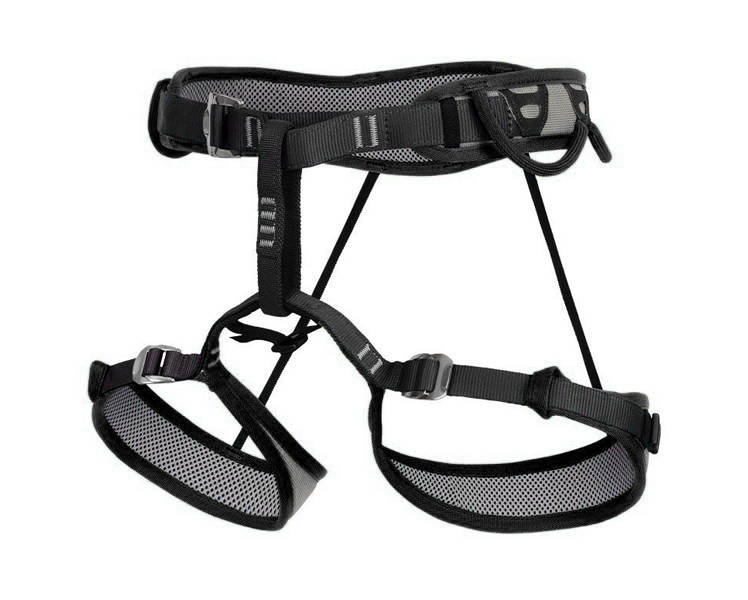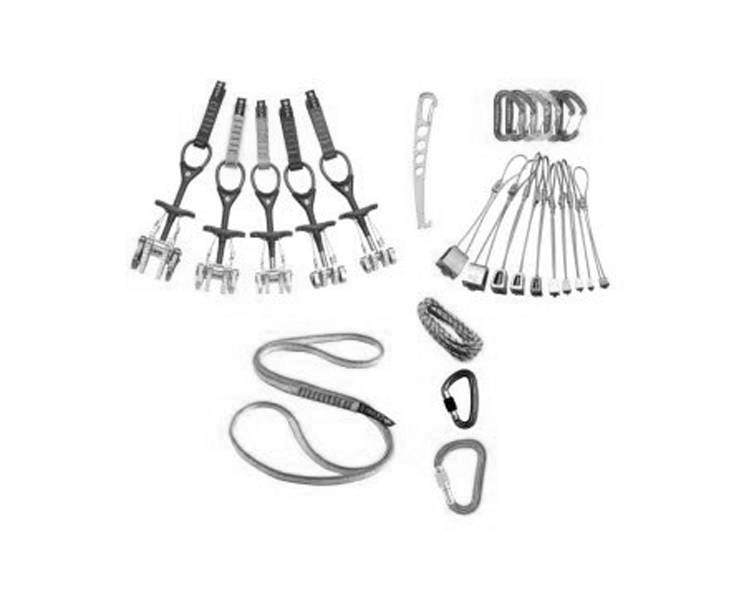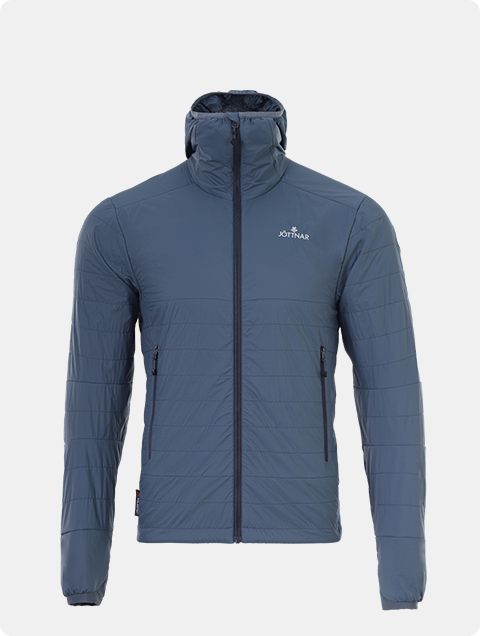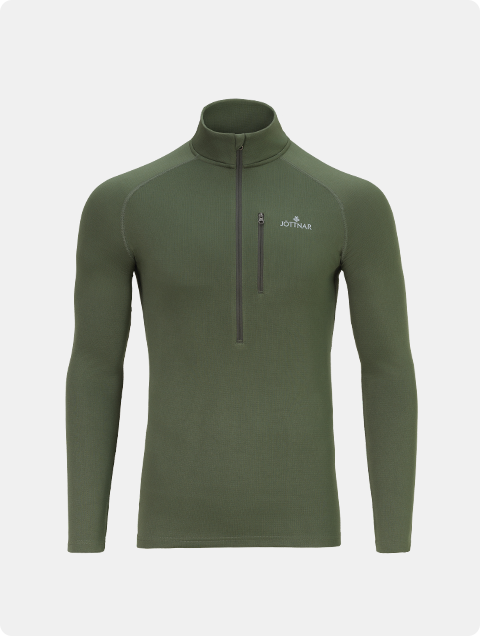

Location
Mont Blanc Du Tacul, France

Season
Jun - Sep

Summit Height
Set within the alpine playground of The Mont Blanc Massif, The Arête du Diable is the showpiece ridge of the south face of Mont Blanc du Tacul. Graded D+, it’s an 800m ridge traverse that tackles some of the most spectacular Chamonix terrain.
After climbing the route last summer, Willis Morris of the Jöttnar Pro Team launched his speedwing from the summit and flew back down to the Chamonix valley in all of 2 minutes and 45 seconds.
Here he gives an insight into this prized route.
Anyone who has visited the area will know well the astounding spectacle that the Massif makes. The range stretches 46 kilometers along the border that divides Italy and France with 4,000m peaks surrounding Mont Blanc, Western Europe's highest summit. The French side, sitting high above the town of Chamonix, displays one of the most beautiful skylines imaginable. Immense granite walls tower high in every direction, protruding from world famous mountains that hold as much history as they do seracs and snow fields.
From Italy, the view is even more spectacular. The south side of the Massif appears almost Himalayan in scale, with some of the largest faces and ridges in Europe that soar skywards to the Mont Blanc summit.
"Descending after long routes is always the worst part. Unless, of course, you can fly."
Translated as the "Devil's Ridge" - aptly named for the serrated horn-like appearance of the five rock pinnacles that make this aesthetic route so unmistakable - it is rare to find a climb that holds such prestige from all that have climbed it, whether they be famous alpine heroes or visiting weekend warriors. Combining six separate 4,000m summits, technical climbing on superb rock and situations of extreme exposure, all whilst surrounded by exceptional scenery, the Arête du Diable has something to captivate every alpinist.
Tactics For The Ascent
1. Get an early start
Even with the face in close proximity to the Torino Hut, an early start is required in order to climb the approach couloir before the sun rises and causes problems with rockfall.
Don't underestimate the length of this route. You'll want as much daylight as possible to complete it and with the average ascent taking between 6-9 hours, you want to have plenty of time to descend Tacul and make the lift down to the valley.
If you're not confident you'll be able to move fast enough to make the lift, pre-planning a night in the Cosmique Hut after making the descent from the summit of Tacul will allow you to relax your pace.
2. Get acclimatised
This is a masterpiece of alpine high altitude climbing. The route will have you summiting six individual 4,000m summits: The Corne du Diable, Pointe Chaubert, Pointe Médiane, Pointe Carmen, The Isolée and finally Mont Blanc du Tacul. That's a lot of time up high, tackling technical climbing, numerous abseils and no good options for retreat.
We all know how horrid a beautiful climb can become when you haven't spent enough time getting used to the thinner air up high. Give yourself the best chances of not only completing this route but also enjoying it by making sure you're as fit as possible before your trip, and readily acclimatised for the ascent.
There are literally thousands of easy yet high routes in the area to get your lungs working hard before attempting a route like this. Don't skip this step!
2. Get acclimatised
This is a masterpiece of alpine high altitude climbing. The route will have you summiting six individual 4,000m summits: The Corne du Diable, Pointe Chaubert, Pointe Médiane, Pointe Carmen, The Isolée and finally Mont Blanc du Tacul. That's a lot of time up high, tackling technical climbing, numerous abseils and no good options for retreat.
We all know how horrid a beautiful climb can become when you haven't spent enough time getting used to the thinner air up high. Give yourself the best chances of not only completing this route but also enjoying it by making sure you're as fit as possible before your trip, and readily acclimatised for the ascent.
There are literally thousands of easy yet high routes in the area to get your lungs working hard before attempting a route like this. Don't skip this step!
3. Get slick, get fast
Ropework on ridge routes is always awkward and the Arête du Diable is no exception. Your ability to not only move efficiently whilst climbing but also descending is a critical factor in making the summit smoothly. Organising and switching gear between partners on the technical pitches needs to be quick and automatic, and your ability to move together as a team over easy terrain is vital.
Your proficiency for setting up and retrieving ropes for abseils needs to feel effortless. Wasting just a few minutes per abseil will multiply to cost you hours over the dozen or so abseils involved in overcoming the needles.
Like everything, practice makes perfect and spending time with your partner improving your efficiency in these skills will prepare you well.
4. Sharpen those picks
Although the majority of the route is a rock climb which can be tackled in both rock shoes or boots, overcoming the bergschrund and approach couloir can prove difficult for those not readily prepared. With temperatures rising across the Alps and less snow remaining on the mountains every summer, approaching these classic routes is becoming challenging. On our ascent, what should have been an easy snow romp to the Col du Diable turned out to be a bit of a battle up concrete hard permafrost ice that had been exposed from the lack of snow.
Lightweight axes and aluminium crampons made for light packs on the climb, but also meant dealing with such technical ice was more difficult than it should have been. Make sure your front points and picks are sharp to make climbing this section easy and be prepared with an ice screw or two to protect what would otherwise be a solo without them. The Guides office in Chamonix is always worth dropping into before heading to the mountains to find out current conditions before deciding on your objective.
4. Sharpen those picks
Although the majority of the route is a rock climb which can be tackled in both rock shoes or boots, overcoming the bergschrund and approach couloir can prove difficult for those not readily prepared. With temperatures rising across the Alps and less snow remaining on the mountains every summer, approaching these classic routes is becoming challenging. On our ascent, what should have been an easy snow romp to the Col du Diable turned out to be a bit of a battle up concrete hard permafrost ice that had been exposed from the lack of snow.
Lightweight axes and aluminium crampons made for light packs on the climb, but also meant dealing with such technical ice was more difficult than it should have been. Make sure your front points and picks are sharp to make climbing this section easy and be prepared with an ice screw or two to protect what would otherwise be a solo without them. The Guides office in Chamonix is always worth dropping into before heading to the mountains to find out current conditions before deciding on your objective.
5. Take a speedwing!
Descending after long routes is always the worst part. Unless, of course, you can fly...
Summit to valley in sub-three minutes.

Specialist Equipment

Route Length
800 m

Average Time
6-9 hrs

Grade
D+











